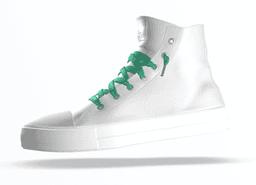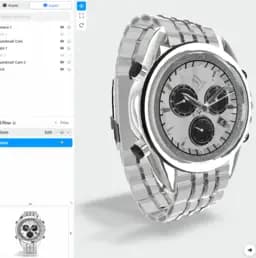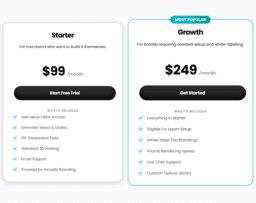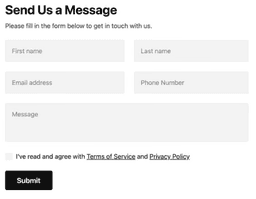Magic Leap 2 vs HoloLens 2 – Uncovering the Best Features
For enterprise-level AR applications, choose Magic Leap 2 for its lighter weight, enhanced optics, and personalized fit. Opt for HoloLens 2 if your focus lies in collaboration, education, and productivity, or if you demand solid hand-tracking and extensive developer resources.

Key Differences Between Magic Leap 2 and HoloLens 2
- Magic Leap 2’s lightweight (260g) versus HoloLens 2’s heavier build (566g).
- Customized fit and comfort for Magic Leap 2, with replaceable Prescription Inserts available.
- Magic Leap 2’s 70° FOV and 1440 x 1760 px resolution versus HoloLens 2’s 43° FOV and 2048 x1080 resolution.
- HoloLens 2 offers more developer resources and supports extensive collaborative platforms, such as Microsoft Mesh.
- Magic Leap 2 enables user environment integration, offering more flexibility in adapting digital content.
- AMD quad-core Zen 2 SoC chip in Magic Leap 2 versus Qualcomm Snapdragon 850 in HoloLens 2, affecting the capability to handle demanding visuals and apps.
- The HoloLens 2 has more advanced hand-tracking while the Magic Leap 2 prioritizes adaptive inputs from hand and eye-tracking, voice command, and Bluetooth devices.
| Comparison | MagicLeap2 | HoloLens 2 |
|---|---|---|
| Construction & Design | Based on 1,500 face scans, light at 260g, Compute Pack placed on hip | Weighs 566 grams, transparent lenses |
| Wearability | Custom Fit app for fit adjustment, Prescription Inserts for eyeglasses wearers | Form-fitting headstraps, adjustable ratchet, adjustable IPD lenses for long-term usage |
| Eye-strain & Dimming Features | Uses 4 eye-tracking cameras, Global Dimming and Segmented Dimming | Eye-tracking enabled via Infrared cameras |
| Processor & Hardware | AMD quad-core Zen 2 SoC, adopts partitioned computing | Qualcomm Snapdragon 850, 64GB storage, 4GB DDR4 RAM. |
| Optics & Display | 32-layers in lens, 1440×1760 px resolution, up to 70° FOV. | Waveguide technology with 2048×1080 resolution, 43 degrees horizontal FOV. |
| Input Support | Hand and Eye-tracking, Voice Command, Bluetooth devices | Gestures, Eye & hand tracking, Voice commands. |
| Audio & Communication | Industry-leading spatial audio | Spatial sound with 5-mic array |
| Integration & Management | Links with enterprise MDM systems, customizable UX | Pairs with AzureCloud storage, supports custom apps creation |
| Price | From USD $3,692.99 | USD $3,500 |
What Is MagicLeap2 and Who’s It For?
The MagicLeap2 AR device bolsters enterprise productivity through an immersive platform researched through 1,500 face scans. MagicLeap2 is for professionals seeking a dynamic collaboration tool to perform exhaustive tasks such as full-body diagnostics. With hardware bearing 32-layer industry-leading optics and quad-core AMD Zen 2 SoC chip, this device is for enterprises that value performance and visual clarity.

Pros of MagicLeap2
- Provides immersive enterprise solutions with its robust hardware
- Custom Fit app to assure proper fit
- Supports multiple inputs including eye-tracking, voice command, Bluetooth devices
- Seamless integration with leading enterprise MDM systems
Cons of MagicLeap2
- Relatively weighty at 260g
- Requires swap of Prescription Inserts for glasses wearers
- Significant investment with a starting price of USD $3,692.99
What Is HoloLens 2 and Who’s It For?
Microsoft’s HoloLens 2, at $3,500, defines the future of enterprise solutions rather than gaming. This AR headset is for professionals and academicians in need of a productivity enhancement tool. With a built-in Time-of-Flight depth sensor and infrared cameras, the device is ideal for enterprises offering hands-on training and anchored projections.

Pros of HoloLens 2
- Emphasizes productivity and education over games and entertainment
- Improved spatial awareness useful for diverse enterprise applications
- Quality overlays with 2048×1080 resolution
- Increased Field of View (FOV) from 30 to 43 degrees
Cons of HoloLens 2
- Weightier than competitors at 566 grams
- Limited 3-hour battery life, reduced further under heavy use
- Primarily targets the enterprise market, limiting wider consumer application
Magic Leap 2 vs HoloLens 2: Pricing
While both are innovative AR devices targeted at enterprise markets, Magic Leap 2 with its customisable UX features starts at $3,692.99, while the advanced HoloLens 2 from Microsoft is priced at a slightly lower $3,500.
Magic Leap 2
Magic Leap 2 is an advanced AR device constructed after diligent research and proposes impressive features like 32-layers of lens and dynamic dimming technology for optimal usage in various lighting conditions. Aimed at catering to enterprise needs with its customizable UX features, it houses a powerful AMD quad-core Zen 2 SoC chip supporting demanding visuals and apps. The pricing for this cutting-edge AR technology starts from USD $3,692.99.
HoloLens 2
The HoloLens 2, designed by Microsoft, aims to revolutionize the enterprise market. Incorporating features like spatial awareness, hand tracking, and the Qualcomm Snapdragon 850 Processor for efficient use, it targets productivity and education. The HoloLens 2 even has the added IPD lenses for all-day use, with an adjustable ratchet tightening mechanism. This trailblazing headset carries a price tag of $3,500.
Magic Leap 2 or HoloLens 2: The Ultimate Verdict
The game-changer for AR/VR, Magic Leap 2, locked horns with Microsoft’s HoloLens 2. Which one should you pick? Let’s deep dive into the verdict.
AR/VR Developers
For those who build visually demanding applications, the Magic Leap 2 with its AMD quad-core Zen 2 SoC chip and 1440×1760 px resolution offers superior image and text clarity. Add to this its compatibility with multiple input forms, including hand and eye-tracking, Bluetooth devices, and voice command. HoloLens 2, however, lags with 1440×936 px display and lesser input methods.

Enterprise Collaborators
The Dynamic Dimming and industry-leading spatial audio features of Magic Leap 2 offer realistic collaborative experiences, surpassing the audio capabilities of HoloLens 2. Furthermore, Magic Leap 2’s 70° FOV allows for extensive collaboration among teams, while HoloLens 2’s 43° FOV falls short.

Education and Training Personnel
While both devices serve educational purposes, HoloLens 2, backed by Microsoft’s comprehensive resources, takes the lead. Its Azure Cloud storage and extensive developer resources allow for greater custom app creation. Despite Magic Leap 2’s unique features, it cannot beat HoloLens 2’s rich user-friendly educational ecosystem.

If you’re seeking a powerhouse for visually demanding AR/VR development or need a cutting-edge collaboration tool, Magic Leap 2 is your best bet. But for education and training, HoloLens 2, with its rich Microsoft ecosystem, rules the roost.







